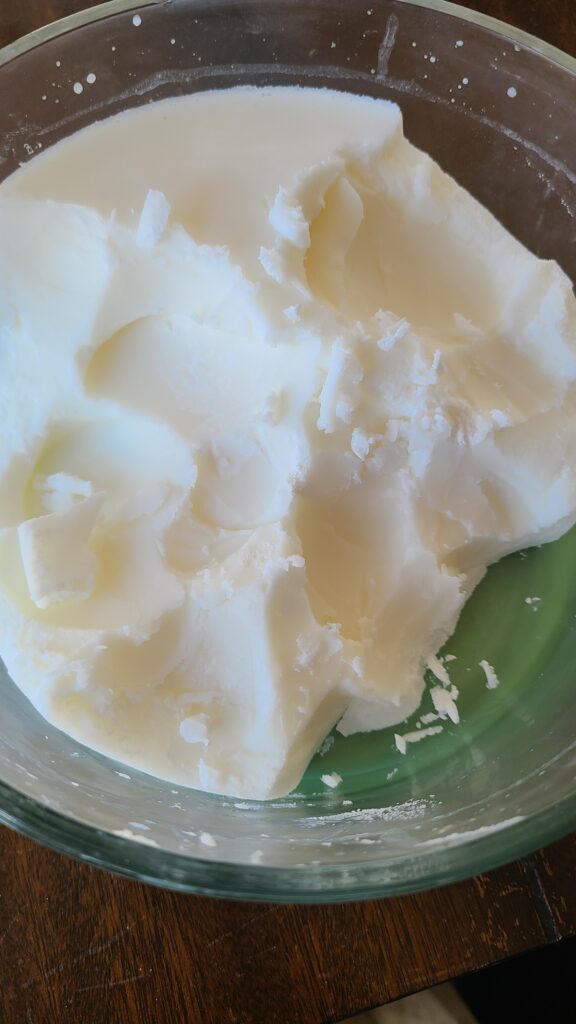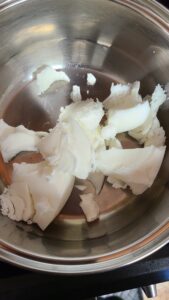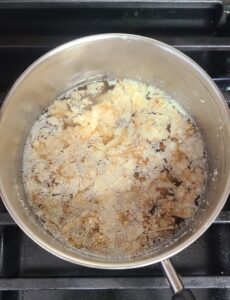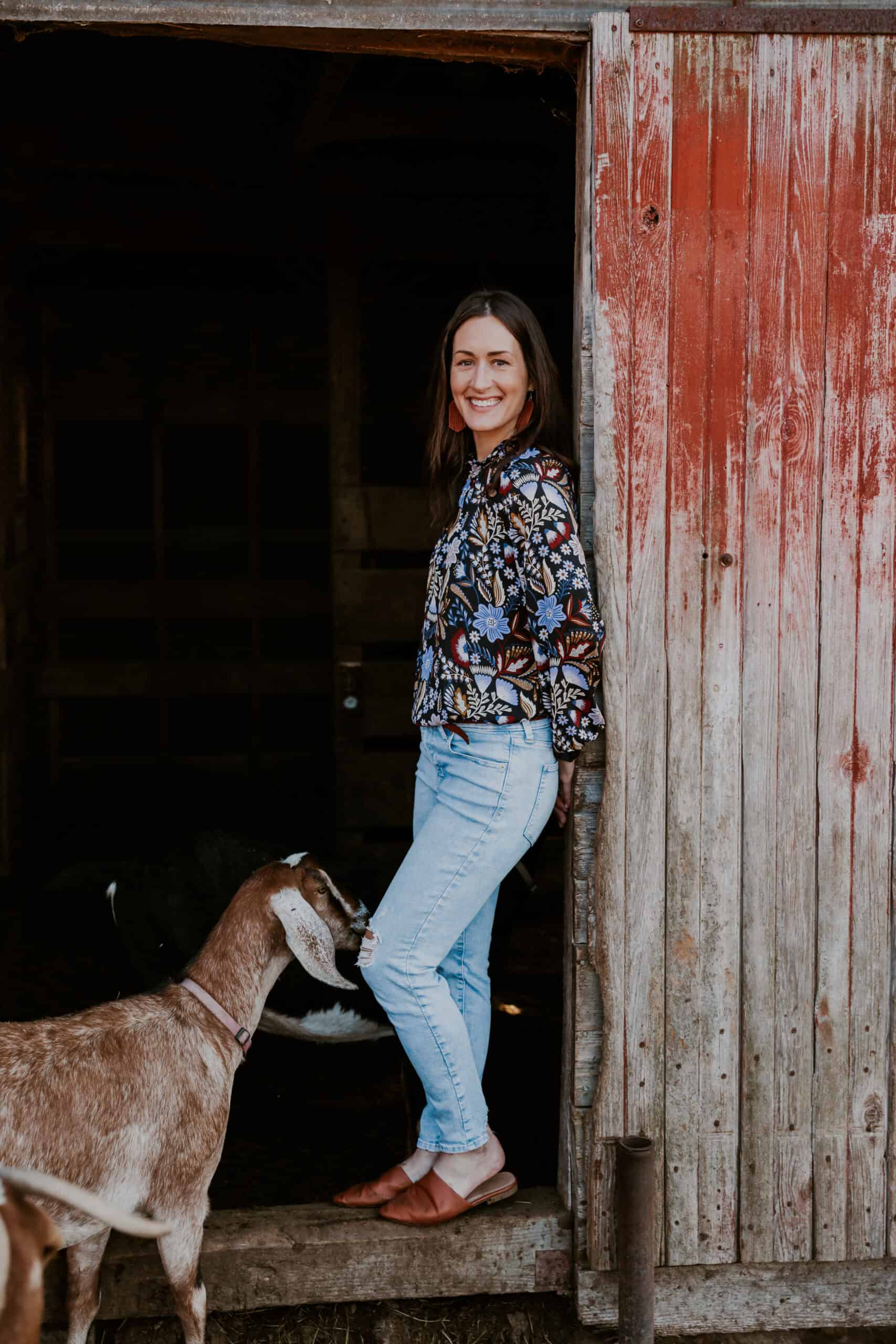This post contains affiliate links. As an Amazon Associate, I earn from qualifying purchases.

Tallow is made from rendering the fat from a ruminant animal. Ruminants include cattle, sheep, goats, and deer. They all have a four-chambered stomach and chew cud, unlike pigs which are monogastric and give us lard. For directions on rendering lard in a slow cooker, click here to read my article.
Tallow can be used in place of shortening in baked goods, candle making, and to make skincare products like soap, lotion, and lip balm. For my venison tallow lip balm recipe, click here!
You can buy beef suet from a butcher and render tallow from that, or if you process your own livestock or wild game like us, you will have access to plenty of wonderful ruminant fat. The purest (and least stinky) tallow is rendered from leaf fat which is found around the animal’s kidneys, but tallow can be successfully rendered from any fatty part of the carcass. The pictures in this post show the rendering of venison tallow!
Materials Needed for Rendering Tallow on a Stovetop
- Stove
- Ruminant fat (partially thawed)
- Kitchen knife
- Cooking pot
- Water
- Rubber spatula
- Mesh strainer
- Cheese cloth
- Large measuring cup with a spout
- Mason jar and lid or other storage container
I render tallow on my gas stove, I use one of the small burners on the lowest setting. The slower the fat cooks down, the better the tallow will turn out. The suet or raw fat is easier to cut into small pieces when it is partially thawed. Choose a cooking pot large enough for the fat and enough water to cover it without danger of it boiling over. You will need to supervise the rendering process and will use a rubber spatula to stir the fat periodically and scrape any bits that stick to the sides of the pot.
After 1-2 hours of cooking, the initial rendering will be complete and you will pour the hot fat and water mixture through a mesh strainer lined with cheese cloth. I recommend pouring it into a large measuring cup with a spout (you want the spout so it is easy to transfer later). As it cools, you will see the tallow rise to the top of the water where it will solidify in the measuring cup. Once completely cool, the floating tallow can be plucked from the water and the rendering process can be repeated, if you so desire.
For cooking purposes, two renderings is sufficient, in my opinion, but if I am making skincare products I choose to repeat the process several times to refine the tallow to pure, white, and odorless.

You can store tallow in an airtight container in the refrigerator and it will keep for about a year. If you leave it at room temperature, it keeps for 4-6 months. If the tallow smells bad when you remove the lid (like rotten meat) it has gone rancid and should be thrown out.
Directions for Rendering Tallow on a Stovetop
- Plan for spending 1-2 hours per rendering on this activity
- Cut the suet or raw fat into small pieces with a kitchen knife (the smaller the better) and put them into your cooking pot
- Add enough water to the pot to cover the cut fat pieces

- Put the pot on the stove and turn the burner on low
- Every 20-30 minutes, stir the fat with a rubber spatula. Scrape the sides of the pot to loosen anything that sticks
- Continue cooking until all fat has rendered. You will know when there are dry pieces of meat, skin, and unrendered fat floating on top
- Line a mesh strainer with cheese cloth and set it on top of a large measuring cup
- Carefully (it will be very hot!), pour the fat and water mixture through the lined strainer into the measuring cup
- Discard the cheese cloth and the bits that collected on top of it
- Allow the water and tallow time to cool and separate in the measuring cup
- Remove the solid tallow cake from the measuring cup, discard the water
- Examine the bottom of the tallow cake, if there are brown spots those can be scraped off with a knife
- Decide if you want to render the tallow again
- Repeat steps 2-12 until you are happy with the results
- On the last render, omit the water. Slowly reheat the tallow cake in the cooking pot and strain it with fresh cheese cloth into the measuring cup
- Using the spout on the measuring cup, pour the hot tallow into a Mason jar or the storage container of your choice
- Allow the tallow to cool, you will see it turn from a yellow liquid to a white solid
- Once cooled, affix the lid and store the tallow in the refrigerator or at room temperature
- Use your tallow for something special!

Mother, farmer, author, and teacher by trade… She loves tending to things and watching them grow!
